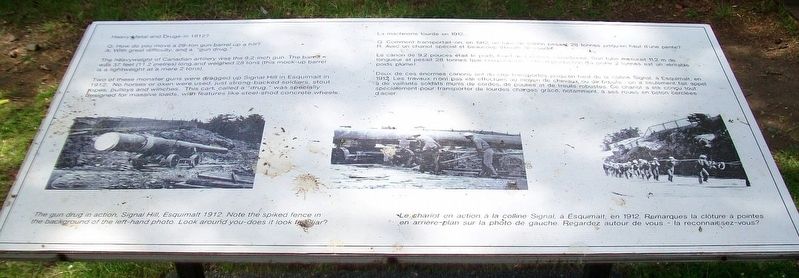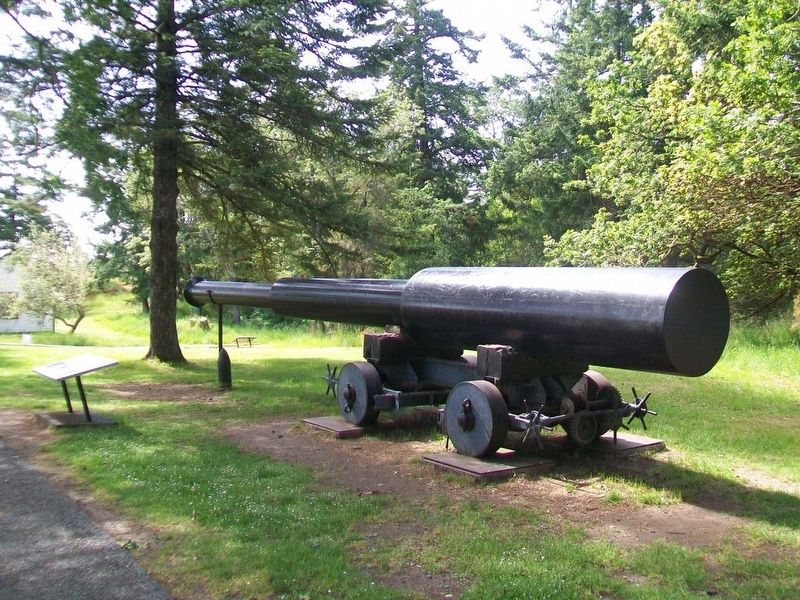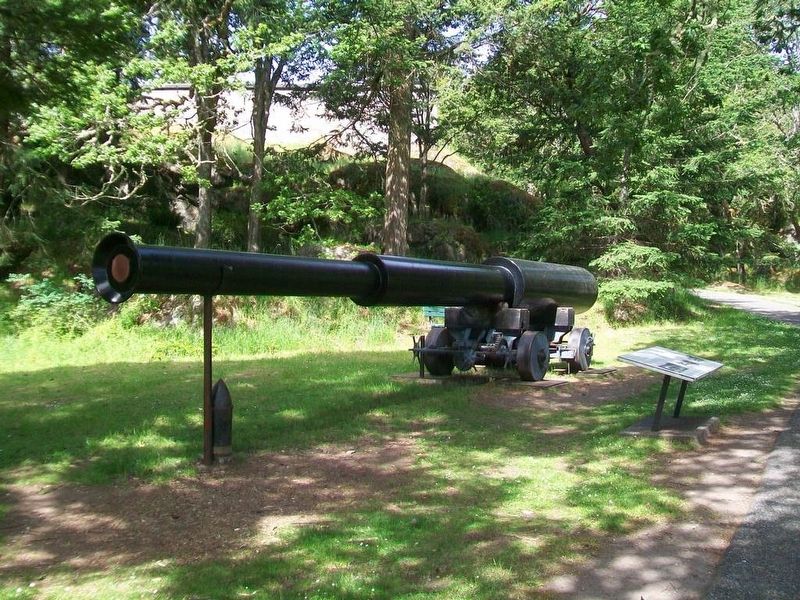Heavy Metal and Drugs-in 1912? / La machinerie lourde en 1912...
Q: How do you move a 28-ton gun barrel up a hill?
A: With great difficulty, and a "gun drug."
The heavyweight of Canadian artillery was the 9.2-inch gun. The barrel was 27 feet (11.2 metres) long and weighed 28 tons (this mock-up barrel is a lightweight at a mere 2 tons).
Two of these monster guns were dragged up Signal Hill in Esquimalt in 1912. No horses or oxen were used, just strong-backed soldiers, stout ropes, pulleys and winches. This cart, called a "drug," was specially designed for massive loads, with features like steel-shod concrete wheels.
———————————
Q: Comment transportait-on, en 1912, un tube de canon pesant 28 tonnes jusqu'en haut d'un pente?
R: Avec un chariot spécial et beaucoup d'houile de coude!
Le canon de 9,2 pouces était le poids lourd de l'artillerie canadienne. Son tube mesurait 11,2 m de longueur et pesait 28 tonnes (par comparaison, cette reproduction d'à peine 2 tonnes est un véritable poids plume).
Deux de ces énormes canons ont dû être transportés jusqu'en haut de la colline Signal, à Esquimalt, en 1912. Les travaux n'ont pas été effectués au moyen de chevaux ou de boeufs : on a seulement fait appel à de vaillants soldats munis de cordes, de poulies et de treuils robustes. Ce chariot a été concu tout
spécialement pour transporter de lourdes charges grâce, notamment, à ses roues en béton cerclées d'acier.
[Photo caption reads]
The gun drug in action, Signal Hill, Esquimalt 1912. Note the spiked fence in the background of the left-hand photo. Look around you-does it look familiar?
Le chariot en action à la colline Signal, à Esquimalt, en 1912. Remarques la clôture à pointes en arrière-plan sur la photo de gauche. Regardez autour de vous - la reconnaissez-vous?
Erected by Parks Canada.
Topics. This historical marker is listed in these topic lists: Forts and Castles • War, World I. A significant historical year for this entry is 1912.
Location. 48° 25.98′ N, 123° 27.177′ W. Marker is in Victoria, British Columbia, in Capital. Marker is on the grounds of Fort Rodd Hill and Fisgard Lighthouse National Historic Sites of Canada. Touch for map. Marker is at or near this postal address: 603 Fort Rodd Hill Road, Victoria BC V9C 2W8, Canada. Touch for directions.
Other nearby markers. At least 8 other markers are within walking distance of this marker. Officer's Quarters / Logements des officiers (within shouting distance of this marker); Upper Battery / Batterie supérieure (within shouting distance of this marker); 1942 Willys Jeep / Jeep Willys de 1942 (within shouting distance of this marker); "Ack Ack" (Anti-Aircraft) Artillery (within shouting distance
Also see . . . Fort Rodd Hill and Fisgard Lighthouse National Historic Sites of Canada. (Submitted on November 7, 2016, by William Fischer, Jr. of Scranton, Pennsylvania.)
Credits. This page was last revised on December 16, 2020. It was originally submitted on November 7, 2016, by William Fischer, Jr. of Scranton, Pennsylvania. This page has been viewed 287 times since then and 6 times this year. Photos: 1, 2, 3. submitted on November 7, 2016, by William Fischer, Jr. of Scranton, Pennsylvania.


